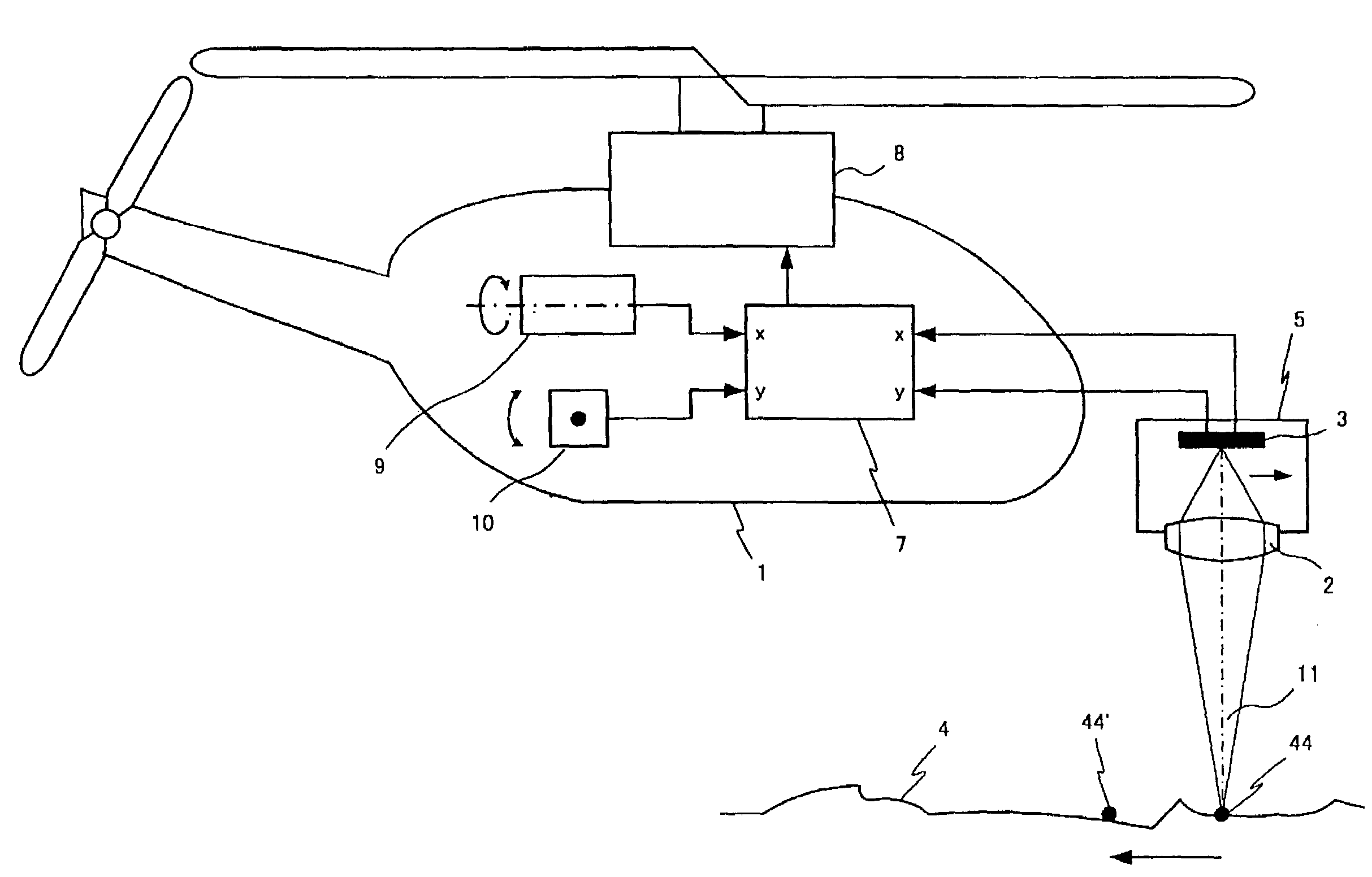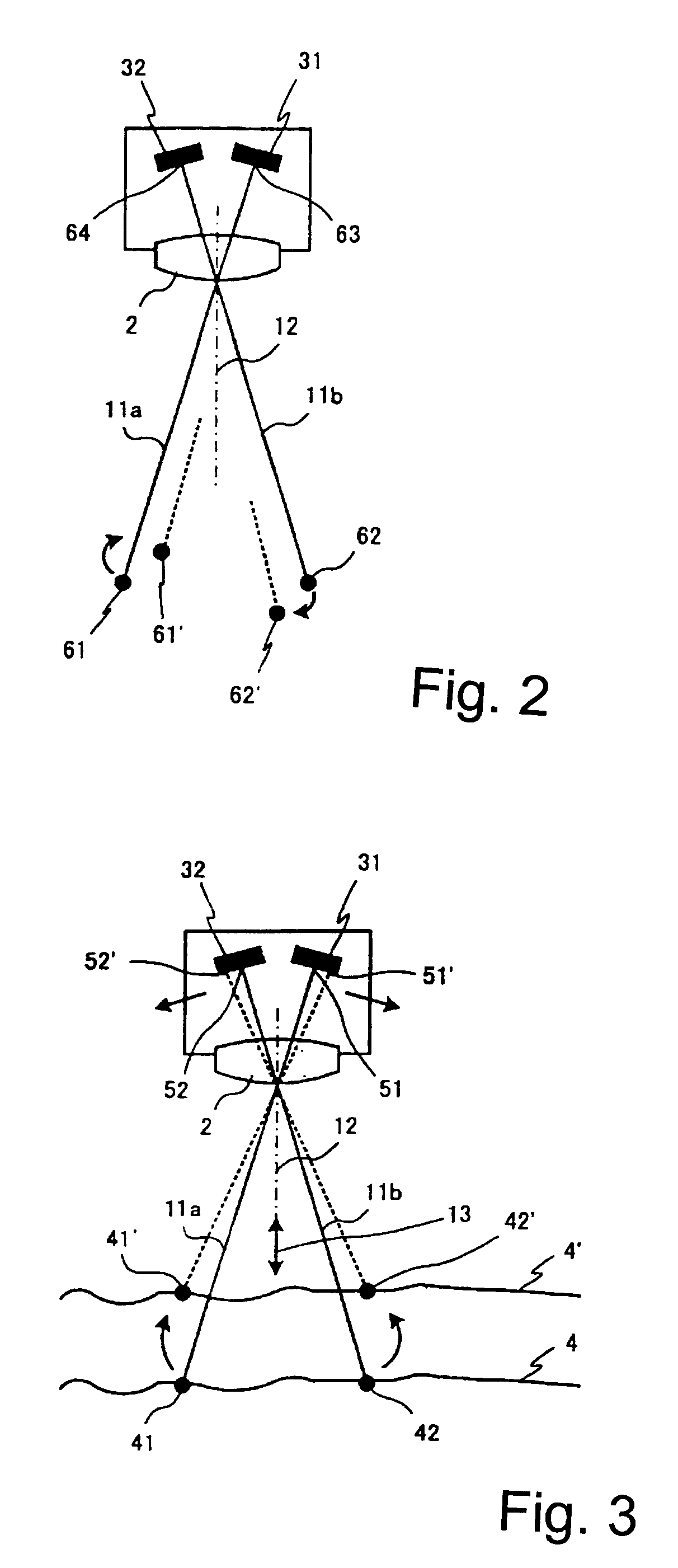Optical sensing system and system for stabilizing machine-controllable vehicles
a sensing system and optical sensor technology, applied in the direction of remote control toys, instruments, navigation instruments, etc., can solve the problems of inability to measure or regulate the system cannot only operate correctly, and the inability to control the absolute position of the ground, etc., to achieve the effect of stabilising the flight movement, avoiding undesirable fluctuations, and accelerating the reaction of the shift sensor
- Summary
- Abstract
- Description
- Claims
- Application Information
AI Technical Summary
Benefits of technology
Problems solved by technology
Method used
Image
Examples
Embodiment Construction
[0088]FIG. 1 shows a first embodiment example for measuring and stabilising the horizontal movements of a helicopter 1. The lens 2 acts as objective lens and projects a visible section of the ground 4 onto the optical shift sensor 3 having an integrated analysing unit, on the same chip. During a forward movement, ground spot 44 migrates optically to the position 44′, and accordingly, its image on the sensor 3 is shifted. The sensor outputs the incremental measurement values of the shift in two coordinates (x and y). If the line of sight, as indicated, is downwards, information concerning the flight velocity with respect to ground in both components forward direction and lateral direction is obtained.
[0089]These measurement values may be used for stabilising the flight path or a still-standing hovering flight. To this end, the feedback-control electronics 7 is, at its input side, connected to the optical measurement signals, and at its output side outputs control values for controlli...
PUM
 Login to View More
Login to View More Abstract
Description
Claims
Application Information
 Login to View More
Login to View More - R&D
- Intellectual Property
- Life Sciences
- Materials
- Tech Scout
- Unparalleled Data Quality
- Higher Quality Content
- 60% Fewer Hallucinations
Browse by: Latest US Patents, China's latest patents, Technical Efficacy Thesaurus, Application Domain, Technology Topic, Popular Technical Reports.
© 2025 PatSnap. All rights reserved.Legal|Privacy policy|Modern Slavery Act Transparency Statement|Sitemap|About US| Contact US: help@patsnap.com



